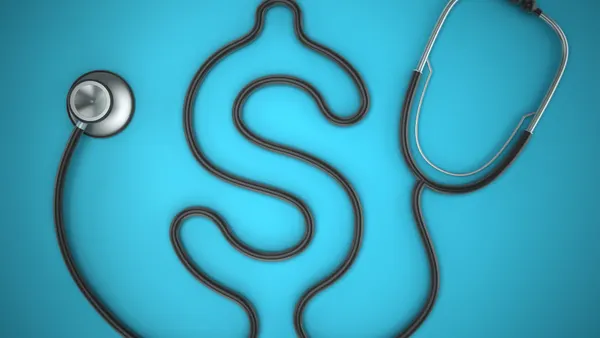As insurance payers increasingly rely on automation and algorithm-driven claim reviews, emergency physician groups face growing financial risk. Instead of evaluating the full clinical picture, many payers now base reimbursement decisions almost entirely on ICD-10 diagnosis codes.
“We’re seeing a growing disconnect in how payers are valuing physician services,” says Dr. Andrea Brault, president and CEO of Brault Practice Solutions. “And a lot of that comes down to the words physicians are using in their diagnosis line. If the claims don’t pass automated review, even high-acuity visits are at risk of being down-coded.”
A Brief History of Diagnosis-Centric Reimbursement
“Historically, emergency physicians were taught to ‘think in ink’ — to document their clinical reasoning within the Medical Decision Making (MDM) section of the patient chart,” explains Dr. Brault. “And while that continues to be important, payers have shifted their claims adjudication processes in recent years.”
Attempts to link final diagnoses with the value of the evaluation and management (E/M) services began in the early 2000s, when a research team at NYU developed an algorithm to analyze millions of emergency department visits and assess ED utilization patterns across New York City. Their study concluded that nearly 75% of non-admitted ED visits in 1998 could be classified as “non-emergent” or “primary care treatable.”
The study was meant to highlight access gaps and promote better primary care for vulnerable populations. But the findings had unintended consequences. The authors explicitly cautioned that: “The algorithm is not intended as a triage tool or a mechanism to determine whether ED use is appropriate for required reimbursement by a managed care plan. Nor was it intended to assess appropriateness of ED utilization.”
Despite those caveats, payers took notice. The Billings study spurred a wave of related research and policy changes that eventually led to the development of Low Acuity Non-Emergent (LANE) lists — payer-defined diagnosis lists used to justify reduced reimbursement for certain ED visits.
“We’ve seen an increasing number of payers rely solely on ICD-10 codes,” says Dr. Brault. “In some cases, if any diagnosis on a claim matches one from the LANE list, the claim is automatically downgraded to a triage-level payment. That happens even when the physician performed a high-complexity workup, because the portion of the claim a payer sees may not always reflect that complexity.”
The Evolving Role of Diagnosis Lines
Diagnosis lines have taken on a new level of financial importance in emergency medicine. While CPT guidance emphasizes that a final diagnosis does not, by itself, determine medical decision-making complexity, payers are increasingly treating ICD-10 codes as the primary—or even sole—indicator of visit acuity.
“The final diagnosis for a condition does not, in and of itself, determine the complexity or risk, as extensive evaluation may be required to reach the conclusion that the signs or symptoms do not represent a highly morbid condition... Multiple problems of a lower severity may, in the aggregate, create higher risk due to interaction.”
Despite this guidance, payer algorithms continue to flag or down-code claims based on diagnoses alone, often disregarding the broader clinical context.
This has led to an evolution of documentation best practices. It’s no longer enough to capture clinical complexity in the MDM section alone. When appropriate, key clinical details—such as abnormal vital signs, lab results, and relevant comorbidities—must also be reflected in the diagnosis line to support a higher level of care.
Improving the Diagnosis Line: What to Document and Why
As AI and machine learning become more common in the claims review process, many payer systems are now classifying ED visits based solely on the diagnosis code. So, it’s important for physicians to understand how their documentation translates into codes—and how those codes directly impact reimbursement.
Consider chest pain: when coded without context, it often lands on the down-code list. But if abnormal vital signs (like tachycardia), EKG changes, or coexisting conditions (such as hypertension, nicotine dependence or diabetes) were part of the clinical picture, those details should be captured as secondary diagnoses to reflect the full complexity of the workup.
The same holds true for abdominal pain, another commonly down-coded condition. Without supporting documentation — leukocytosis, electrolyte imbalances like hypokalemia, or signs of peritonitis — the visit may be deemed “moderate acuity,” even if significant work was done.
Weak and dizzy is another example. These vague complaints are easily misclassified if they’re not clearly connected to other clinical concerns. However, when paired with findings like altered mental status, orthostatic hypotension, abnormal vital signs, abnormal test results, dementia, or history of falls, the documentation can tell a more accurate story about the level of complexity involved.
Best practices for diagnosis documentation include:
- Capturing abnormal vital signs and lab values in the diagnosis line
- Including relevant comorbidities (e.g., chronic conditions that influence care)
- Reflecting findings from the HPI, ROS, and exam in ICD-10 language
- Avoiding vague or generic diagnoses when a more specific option exists
Ultimately, the diagnosis line should match the complexity of the workup — not just the presenting symptom.
A Culture of Continuous Documentation Improvement
To stay ahead of these changes, physician groups and coding companies are now going beyond traditional education and support. Many are building real-time feedback loops, offering targeted documentation and coding training, and developing tools to flag diagnosis codes that are likely to result in down-coding. Some groups have even created internal diagnosis libraries and reference tools that encourage physicians and coders to maintain better habits.
“We’re not asking physicians to change their care,” says Dr. Brault. “We’re asking them to make sure their documentation tells the full story of that care—because that’s what payers are using to determine value.”
In a reimbursement environment increasingly driven by automation and limited data, clear and accurate documentation is key. And, for emergency medicine, this means viewing the diagnosis line as a front-line defense against down-coding and lost revenue.









